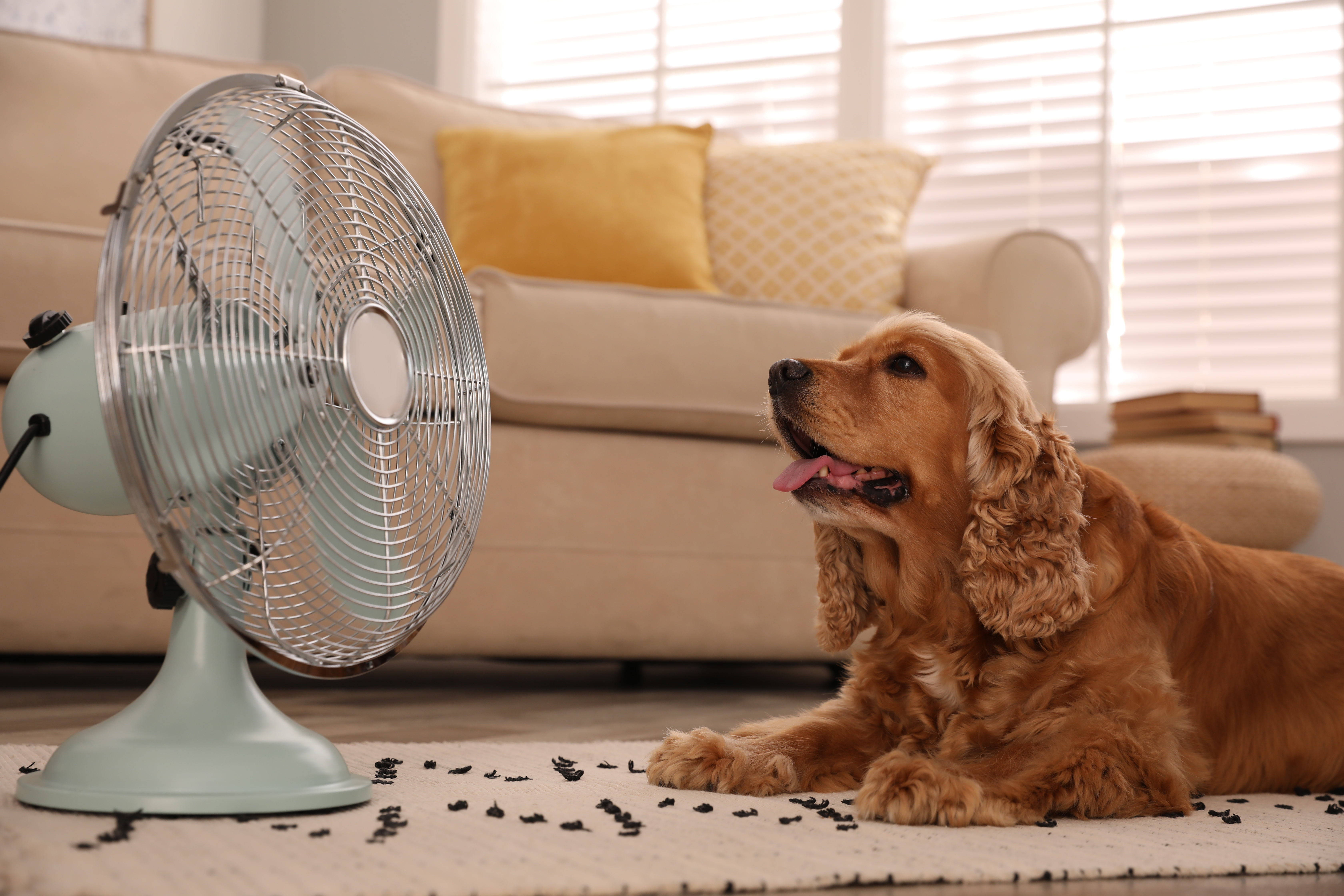
As summer approaches and temperatures rise, it’s essential to prioritize your pet’s safety during the sweltering months. Warm weather poses numerous hazards that can be detrimental to your furry friends if not addressed properly.
- Provide plenty of water and shade to prevent dehydration and heat – related illnesses like heatstroke.
- Avoid hot surfaces and limit outdoor exercise during the hottest times of the day, especially for dogs who are highly susceptible to heatstroke.
- Recognize signs of heat stroke in pets, such as excessive panting, lethargy, vomiting, or seizures, and take immediate action by moving them to a cooler area and contacting your veterinarian if necessary.
- Consider special considerations for different types of pets year-round. For example: cats need access to shade; small mammals should be kept in cool areas away from direct sunlight; reptiles require specific adjustments depending on their species.
Tips For Pet Warm Weather Safety
Provide plenty of water and shade, avoid hot surfaces and exercise during the hottest time of the day, and recognize signs of heatstroke.
Provide Plenty Of Water And Shade
One essential aspect of pet warm weather safety is ensuring that your furry friends have constant access to clean, fresh water and plenty of shade. Proper hydration plays a crucial role in regulating body temperature and preventing heat-related illnesses like heatstroke.
Fill up multiple bowls with cool water around your home, yard or during outdoor activities so that pets can take a sip whenever they need to quench their thirst.
Besides keeping them hydrated, providing shaded areas for pets is imperative when temperatures soar. Set up an umbrella, canopy, or designate a spot under a tree as their “cool zone” where they can retreat from direct sunlight and rest comfortably during hot days.
Be observant of your pet’s behavior – if they seem too hot while playing outside or on walks, bring them into these shady spots for regular breaks before continuing the activity.
Avoid Hot Surfaces And Exercise During Hottest Times Of The Day
When the weather gets warm, it is important to avoid hot surfaces and limit outdoor exercise during the hottest times of the day to keep your furry friend safe. Hot asphalt, pavement, and even sand can quickly burn your pet’s paws, causing them pain and discomfort.
Additionally, excessive heat can lead to dehydration and heatstroke in animals. Instead of heading out for a run midday when temperatures are highest, opt for earlier morning or evening walks when it’s cooler outside.
If you do need to go outside during hotter parts of the day, make sure there’s plenty of shade available for your pet to cool off in between activities.
Recognize Signs Of Heat Stroke
Heat stroke is a serious condition that can be life-threatening for pets. As pet owners, it’s important to recognize the signs of heat stroke so you can act fast and get your furry friend the help they need.
Some common symptoms include excessive panting, lethargy, vomiting, diarrhea, and seizures. You may also notice your pet has red gums or tongue, and their body temperature may be elevated.
If you suspect your pet is experiencing heat stroke, move them to a cool place immediately and offer them water.
It’s important to note that senior pets or those with underlying health conditions are more susceptible to heat stroke in warm weather conditions. Keep an eye on your pet’s behavior when spending time outdoors during hot weather periods and take extra precautions as necessary such as limiting exercise or keeping them indoors during peak daytime hours.
Special Considerations For Different Types Of Pets
Dogs
Dogs are highly susceptible to heatstroke, which can be life-threatening. It’s important to keep them cool in warm weather by providing plenty of fresh water and shade when outdoors.
Avoid exercising dogs during the hottest times of the day and on hot surfaces like asphalt, which can burn their paws. Signs of heatstroke in dogs include excessive panting, drooling, vomiting, and lethargy.
To further protect your furry friend from the sun’s harmful rays, consider using pet-friendly sunscreen on areas with little fur or exposed skin. If you plan on taking your pup swimming at the beach or pool this summer, make sure they are comfortable in the water and never leave them unattended around water sources.
Consider purchasing a life jacket for added protection if necessary.
Cats
Cats may seem independent, but they still need extra care during hot weather. Make sure you always provide clean and fresh water for your feline friend to stay hydrated. Avoid letting your cat roam outdoors during the hottest times of the day, since this could lead to heat exhaustion or heat stroke.
If you notice heavy panting, lethargy, or difficulty breathing in your cat, it’s time to take them inside and give them a cool area with plenty of shade. Additionally, some cats enjoy lounging on sunny windowsills which can be dangerous if there is no protection from UV rays.
Small Mammals (e.g. Hamsters, Guinea Pigs)
Small mammals like hamsters and guinea pigs are susceptible to heatstroke during warm weather. It is important to keep their habitats in a cool area of the house, away from direct sunlight or hot surfaces such as radiators.
Ensure that they have access to fresh water at all times, as well as shade and ventilation. You can also provide them with frozen treats or use a small fan to help cool them down.
If you notice your small mammal exhibiting signs of distress, such as lethargy or rapid breathing, move them immediately into a cooler environment and seek veterinary attention if necessary.
Reptiles
Reptiles are known for their ability to regulate their body temperature in warm weather. However, extreme heat can still be dangerous for them. It’s important to learn about the specific needs of your reptile and make necessary adjustments during hot weather.
Keep your pet in a cool area with adequate ventilation and provide plenty of fresh water. Consider placing a shallow dish of water in their enclosure to allow for soaking or misting to maintain humidity levels.
Beach Safety For Pets
When heading to the beach with your furry companion, it’s important to remember a few safety tips. Keep pets on a leash and check for pet regulations before going. Provide plenty of fresh water and consider a life jacket for swimming dogs.
Check For Beach Pet Regulations
Before heading out to the beach with your furry friend, it’s important to check for any pet regulations in the area. Some beaches may have specific designated areas where pets are allowed, while others may not allow pets at all.
Checking for regulations ahead of time can save you from any surprises and ensure a smooth and enjoyable trip for both you and your pet. Additionally, being responsible and respectful of the rules helps maintain a good reputation for all pet owners at the beach.
Keep Pets On A Leash
When taking your pet to the beach, it’s important to keep them on a leash for their safety and the safety of others. Even if your dog is well-trained and obedient, there are still potential hazards that they may not be able to resist or avoid.
For example, they may chase after other animals or run into dangerous areas such as strong currents or rough waves.
In addition to keeping pets safe and under control, adhering to beach regulations regarding leashes is also important for avoiding fines and legal issues. Some beaches have specific rules about pet leashing based on seasonal restrictions or peak hours when crowds are present.
It’s always best to check with local authorities beforehand so you can plan accordingly and ensure that you’re following all necessary guidelines.
Provide Plenty Of Freshwater
During hot weather, pets need plenty of freshwater to stay hydrated. Make sure their water bowl is always filled with clean and fresh water. You can also consider adding ice cubes to the water or placing several bowls in different areas around your home or yard.
If you’re taking your pet for a walk or to the beach, bring along a collapsible water bowl and a bottle of freshwater. Remember that pets lose moisture not just by drinking but also through panting and sweating from their paws, so it’s important to monitor their hydration levels regularly.
Consider A Life Jacket For Swimming Dogs
While some dogs are natural swimmers, others may struggle to stay afloat in the water. That’s why it’s important to consider a life jacket for your furry friend before hitting the beach or going out on a boat.
Life jackets can provide additional buoyancy and support while swimming, giving you peace of mind knowing your dog is safe in the water.
Conclusion
In conclusion, it’s crucial to prioritize pet warm weather safety as the temperature continues to rise. Remember to provide plenty of water and shade for pets, avoid hot surfaces, and recognize signs of heat stroke.
Also, keep in mind special considerations for different types of pets, such as dogs, cats, small mammals like hamsters and guinea pigs, and reptiles. Beach safety is also important – make sure to check regulations and always provide freshwater while keeping your pet on a leash.
And never forget about car safety! As always during warmer months: hydrate often with fresh water; protect their skin from harmful UV rays; exercise safely during cooler times of day; offer cooling products like pet-safe fans or ice packs; monitor behavior closely for any signs of overheating or dehydration.

